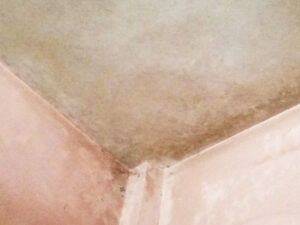As a cat owner, it’s not unusual for accidents like urine marking on freshly painted walls to happen from time to time. Although it may seem daunting at first, you must act swiftly to keep this kind of mess from becoming permanent stains or smells.
Removing cat urine stains and smells from painting walls requires time, patience, and the appropriate tools and methods. There are a few effective products and strategies available that can help remove both the stain and smell left by cat urine, but doing it right requires practice and determination.
Steps taken to efficiently clean cat urine off your painting walls will save time and money over the long haul, regardless of their size or location. Not only will this prevent permanent wall damage but will also leave your home smelling fresher than ever!
This blog post will present various methods to clean cat urine off painted walls, such as step-by-step guides and DIY solutions. Our guidance can help you finally rid yourself of cat pee stains and smells.
How to Clean Cat Urine Off Painted Walls in 5 Easy Steps
Cleaning cat pee off painted walls can be achieved easily using just a few basic tools and ingredients. In this guide, we will outline 5 effective solutions for eliminating cat urine off painted surfaces.

Step 1: Define the area you wish to clean and formulate your cleaning solution
Step one in cleaning cat urine off painted walls is to identify where it has landed, by searching for spots, stains, or areas where you can smell urine. Once you’ve identified the area in need of cleaning, it’s time to formulate your solution. A few essential items will suffice; such as:
White Vinegar and Baking Soda for Water-spraying: A spray bottle containing equal parts of white vinegar and water should then be used to spray baking soda directly on any affected areas, wearing gloves and/or mask as protection from allergens or irritants.
Step 2: Spray cleaning solution on any dirt that you see, to dissolve it
Now, you must apply the cleaning solution. Spray areas stained by cat urine with a solution composed of vinegar and water before scattering baking soda on them. Remember, when baking soda touches the mixture it will begin to fizz and bubble. This is normal and indicates that the solution is effectively neutralizing urine smell and eliminating its trace.
Step 3: Clean the Spot
Once you have applied the cleaning solution to an area, carefully and delicately scrub it. Spread the solution across all stained areas using soft bristle brushes or clean cloth scrubbing pads until all stains have been covered with the solution.
Be wary not to scrub too hard as this could damage the paint on the wall. Instead, work the solution into the spot in a gentle circular motion in order to break up stains.
Step 4: Rinse the Area
Once your scrubbers have finished their work, it’s time to rinse away their results with a clean. A damp cloth dipped into detergent or baking soda solution and any residue from baking soda, and other cleaning solutions left behind from their task. Be sure to regularly rinse this cloth so as to get rid of any dust or dirt build-up on it.
Remember when rinsing an area do not use too much water, too much could potentially damage wall paint and cause more problems down the line.
Step 5: Dab It Dry
The final step in cleaning cat urine off painting walls is drying the area thoroughly with a clean towel or cloth, to get rid of excess moisture and stop mold growth. Make sure all remaining moisture has been extracted completely, so as to not contribute to further contamination of bacteria and mold growth in the area.
Use a fan or open up the windows to hasten the drying process and get rid of any lingering smells. This should also help alleviate any smells.
Tips and Tricks for Cleaning Cat Urine Off Painted Walls
As well as following these steps, here are a few additional strategies for cleaning cat pee off painted walls:
Use cleaners formulated with enzymes
Enzyme-based cleaners are specially formulated to break down proteins found in cat urine. Making it easier to eliminate both its smell and stain from painted walls. Many pet shops sell such cleaners that may prove invaluable when cleaning off cat urine spots from walls.
First, we will test the cleaning solution. Before applying a cleaning solution to a specific spot that needs it, it’s a wise practice to test it on an area that won’t be seen. This will let you know if the answer will harm the painted walls or make them appear different than intended.
For a spot test, simply apply a small amount of cleaning solution on a wall behind some furniture or in a corner, where no one will see it, and wait a few minutes before cleaning the spot. If there are no holes or stains present on this section of the wall, continue using it on all walls.
Odor Neutralizers
Even after you have scrubbed away cat urine from newly painted walls, its scent may still linger. To effectively neutralize this odor, baking soda or activated charcoal are good odor neutralizers to use.
Just place an odor neutralizer in the offending spot, wait a few hours, and remove it with a clean cloth to eliminate odor. Your smell should now be gone!
Can I use bleach to clean cat urine off painted walls?
Bleach is an effective cleaner that can effectively rid many surfaces of stains and smells, but should never be used to remove cat pee from painted walls.
Bleach is a strong chemical that can alter or even discolor some paints, as well as cause them to peel away completely. Furthermore, when combined with other cleaning products like ammonia found in cat urine it can produce hazardous fumes.
Whenever using bleach to remove cat urine from painting walls, be sure to dilute it accordingly and do so in a well-ventilated area. Furthermore, wear protective gloves and eyewear as bleach can harm both your skin and eyes.
Before using bleach on painted walls, it’s wise to conduct a test in an inconspicuous area to make sure it won’t change their color or damage their paint job. If any adverse reactions such as shrinking or peeling arise from using the bleach solution, stop immediately and opt for alternative ways of cleaning instead.
No need for harsh bleach if you want to get cat urine off of painted walls! There are other safe and effective solutions such as white vinegar, baking soda, or special pet urine cleaners. These are gentle enough for painted surfaces yet effective enough in eliminating both staining and the smell of cat pee.
How can I prevent my cat from peeing on freshly painted walls in the future?
If your cat has developed the habit of peeing on painted walls, it can be frustrating and hard to stop them. However, you can stop this behavior in the future by doing the following:
Make sure each cat in your household has access to at least two litter boxes – plus an extra. Keep these clean and easily accessible by your felines.
Use an Enzymatic Cleaner. An enzymatic cleaner is an ideal way to effectively and quickly eliminate any areas where your cat has marked before, breaking down proteins that contribute to repetitive marking.
Scratching is a natural instinct for cats, and providing them with multiple places to scratch will allow them to release any pent-up energy or stress.
Consider using deterrents. There are numerous cat deterrents available, from sprays and alarms that sound when your cat moves, that can help keep him or her from marking walls with urine.
Address any underlying health problems. If your cat suddenly starts peeing outside the litter box, this could be a telltale sign that something is amiss with his or her health. Take him/her to the vet as soon as possible so they can determine whether your feline friend needs medical assistance.
Cats require both mental and physical stimulation in their environment in order to thrive and feel content in life. By giving your feline lots of toys, places to sit, and games to play with, you can help ease its stress levels and prevent peeing in inappropriate areas.
Recognize that it can take time and care to train a cat not to urinate on painted walls. Stay consistent in your approach, and if this behavior persists, consider consulting with a vet or animal behaviorist for additional support. With the right plan in place, you can teach your cat how to use its litter box instead and save your walls from becoming dirty.
Can vinegar clean cat urine off painted walls?
Yes, vinegar can help get rid of cat pee on painted walls. It is an organic and effective solution for eliminating both staining and smell caused by cat urine deposits.
Combine equal parts white vinegar and water in a spray bottle to safely and effectively remove cat urine from painted walls. Apply the solution liberally over the area that has been affected, allow it to set for 10-15 minutes, then scrub gently using a cloth or brush without damaging the paintwork. Rinse thoroughly with water before drying with a clean towel.
Vinegar can effectively rid of cat urine odor due to its acidity dissolving proteins in urine that create its scent. When properly dampened, vinegar may even be used on walls that have been painted. Just ensure a small unnoticeable area has been tested first to make sure there will be no lasting stains or damage to surfaces.
Vinegar can be an effective way to eliminate cat urine odor, though it might not fully eliminate the smell. If that remains persistent, enzyme-based cleaners designed specifically to break down proteins that cause smell could help.
What should I do if my cat peed on my newly painted walls and it has already dried?
Cat urine that has settled onto painting walls can be more difficult to remove than if detected right away, but there are still steps you can take to effectively clean up this area:
- Soak the area: Begin by pouring water on the affected area to help loosen any dried urine deposits. Then carefully wipe down with a wet cloth or sponge without harming any painted surfaces.
- Use an Enzymatic Cleaner: Spray the area with an enzymatic cleaner specifically designed to address pet urine. Follow its directions, allowing time for its enzymes to break down the proteins present.
- Scrub gently: Once the enzyme cleaner has had time to work, scrub gently using a clean cloth or sponge – taking care not to scrub too hard as this could damage the paint surface.
- Rinse and dry: For effective cleaning of an area, use water to rinse it before using a clean towel to dry it off.
If the smell persists after cleaning, either repeat the process or try another product. Since some types of paint can be sensitive to cleaning products. Always test a small, inconspicuous area first to make sure there’s no discoloration or other damage that occurs during application.
Make sure that your cat has clean litter boxes and plenty of activities available to them in order to prevent this behavior from reoccurring. If it continues, this could be a telltale sign of health problems in which case a visit to the veterinarian, should be scheduled immediately for further assessment.
Conclusion
Cat urine on painting walls can be easily eliminated using just a few simple tools and ingredients. By following the steps outlined here, you will be able to get rid of both its stain and smell as soon as possible. Be fast; cat urine left to sit on painted walls will only become harder and harder to remove over time. With persistence and hard work, however, cat pee stains and smells can be eliminated for good.







